To open a forex trading account, you’ll need to choose a broker, register for an account and verify yourself, as well as deposit funds to be able to trade live.
Here we’ll look at all of the details of getting started with a forex trading account. To be able to trade forex via a trading account, you’ll need a few key things.
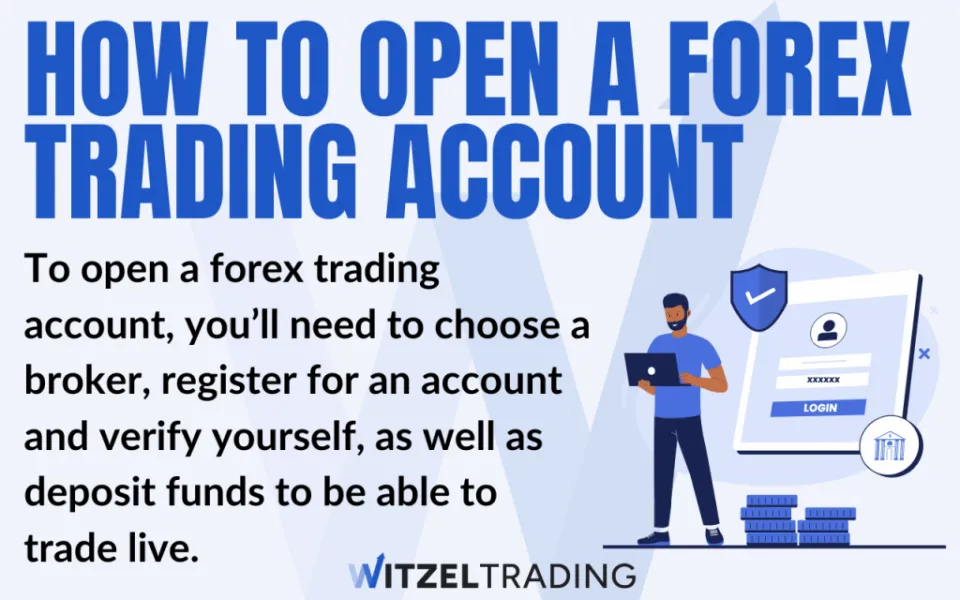
Key Facts For Opening a Forex Trading Account
- A secure and reliable forex broker: choose a reputable broker that offers low fees, strong customer support, and excellent trading conditions
- Personal identification: forex brokers require certain documents to verify your identity, such as a passport, national ID, and proof of address
- Reliable internet connection: trading is done online, so you’ll need a stable internet connection to consistently access the markets
- A funding source: you’ll need to deposit money into your trading account to begin live trading
A short step by step List to open a Forex Trading Account
To open a forex trading account, you’ll have to:
- Choose a reputable brokerage with which you’ll open your account
- Sign up/register your account with the broker by submitting your personal details
- Verify yourself as per the broker’s requirements (submit relevant AML and KYC personal documents)
- Test strategies with a demo account, and explore your strategies and the platform features without risking your capital
- Deposit funds into your live account using your preferred method, as per the available options
- Begin trading, exploring the ins and outs of the forex markets
Opening a Forex Trading Account: The Details
1. Choose a secure Forex Broker with low Costs
When you’re ready to trade the forex markets, the first step is choosing a broker that will host your trading account, and a secure broker that prioritizes money management and online security in your best interests will ensure that your funds are kept safe, while low-cost brokers will help maximize your profitability.
Ideally, you’ll marry these two imperatives-look for brokers that offer competitive spreads, are super transparent about their fees, and speak proudly of their security protocols and regulatory status.*
*There is no one-size-fits-all when it comes to regulation, and many great brokers lack regulation by bodies you personally might expect to be mandatory, yet not because they are dodgy, but simply because of jurisdictional, cost, or other legitimate considerations. These brokers will typically compensate with alternative regulation and obvious, wholesale transparency.
Some examples of highly regarded brokers with good reputations among forex and other traders include:
- FP Markets: Known for offering consistently low spreads and a wide range of trading instruments.
- Vantage Markets: Vantage offers competitive spreads and is big on customer support.
- BlackBull Markets: An ECN broker that offers direct market access with low commissions, as well as excellent customer support.
- FOREX.com: This broker is a good choice for US traders-FOREX.com will give you access to multiple platforms and they offer robust customer service.
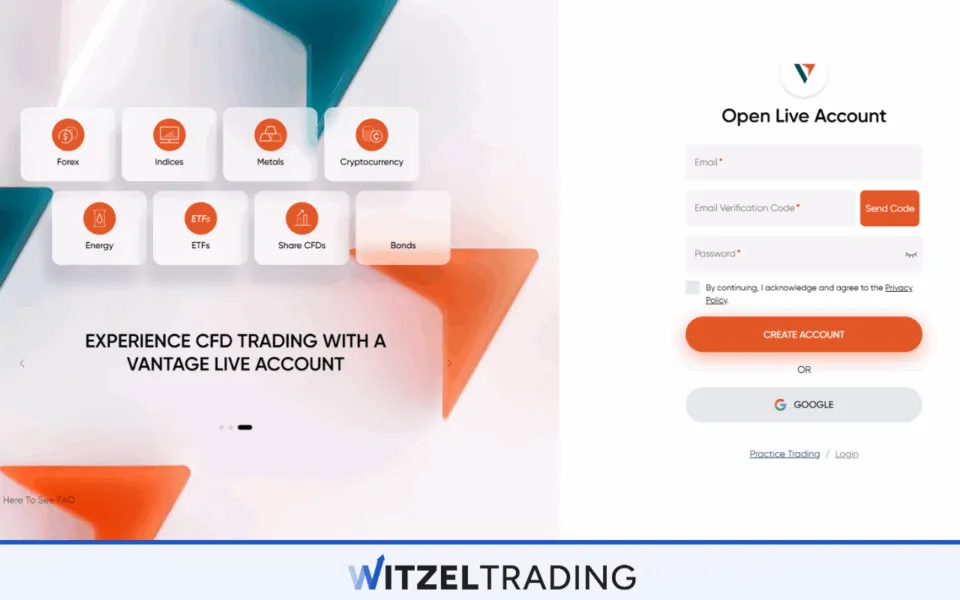
Make sure to research the broker’s regulatory status, trading conditions, and online reputation before signing up.
You need peace of mind on the details to be able to trade effectively, so it’s worth the time taken to thoroughly research your broker options before signing up where you personally feel most comfortable.
Engage Support on your shortlist and ask any and all relevant questions-there are no silly questions when it comes to your money-and good brokers will be happy to explain the details at length.
2. Register your Forex Trading Account
Once you’ve chosen a broker that suits your needs, you can begin registering your forex trading account, and this will involve providing personal details such as:
- Your full name
- Address
- Email address
- Date of birth
- Phone number(s)
You’ll typically also need to answer some questions about your trading experience and financial knowledge as part of the regulatory process, to ensure that you understand the risks of trading.
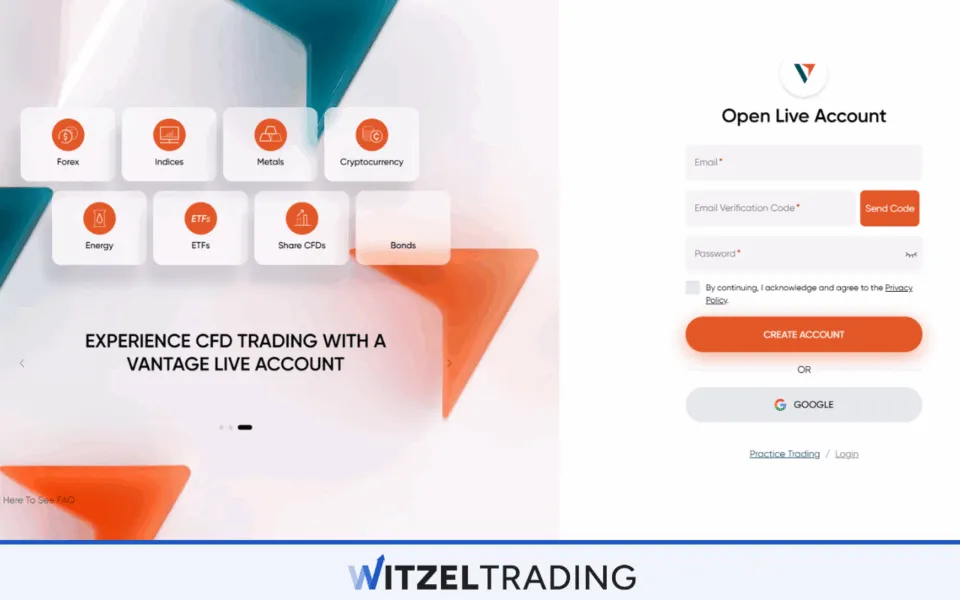
You’ll need to generate a password for your account access, and also usually receive a one time pin via your mail address or mobile that you’ll submit as a final step.
3. Verify your Forex Trading Account
While you can often skip verification at first and trade on your demo account at many brokers before depositing funds, it’s best to get verified at the outset, and this means submitting personal documents to establish that you are who you say you are.
Verification can also involve proof of income and/or tax details, depending on the jurisdictional regulatory obligations of the broker.
Required documents for forex account verification usually include:
- Identity Verification Documents
- To verify your identity, the broker will ask for a national photo ID.
- Accepted forms of identification include a current national ID card, or a (valid) passport.
- Proof of Address Documents
- Brokers also need some form of proof of your residential address.
- Suitable documents for the purpose will include utility bills that show your name and address (not older than 3 months), or similarly current bank statements (that include the bank’s stamp) that display your name and address.
- Additional Documentation
- Certain brokers might also ask for additional documents as per their particular verification processes, such as a tax identification number, or evidence of your source of income (a salary slip, tax returns, or proof of investment dividends).
Several factors can influence your verification period’s duration, such as the broker’s general efficiency and processing pace, the legitimacy and completeness of your submitted documentation, as well as the volume of account applications being processed at the time.
When a broker is running a promotional campaign to onboard new traders, or it happens to be peak trading season at the moment you submit your documents for verification, this can impact the verification period.
With that said, verification typically takes a few hours to a few working days, depending on whether the broker employs manual or more sophisticated methods of verification, and whether they have dedicated staff to tackle verification (some brokers like FOREX.com above utilize biometric scans or advanced algorithms to offer instant verification).
Tips to expedite your Account’s Verification include:
- Preparing all of your documentation in advance of registering an account, and double checking everything to make sure that it’s valid, error-free, and current.
- Buzzing Support immediately after submitting your verification documentation, and staying in regular contact with them during the process.
- If the broker offers a client portal where you can monitor the progress of your verification, checking in every few hours to see if there are requests for additional information, and at what stage your submission is in the process, will also eliminate possible delays.
Remember that brokers require verification to comply with relevant legislation, generate customer trust, and ensure smooth withdrawals, so make sure that your documents are legit and that you proactively communicate with Support during verification.
4. Test the Broker Features and your Trading Ttrategies using the Demo Account
Before risking real money, it’s important to familiarize yourself with the platform tools and features (and the forex market at large) through a demo account.
Your demo account will allow you to trade with virtual funds in real market conditions, and this helps you:
- Practice placing orders and monitoring your trades.
- Test preferred strategies and sample new ones.
- Understand how to apply the platform’s tools and features to your trading style.
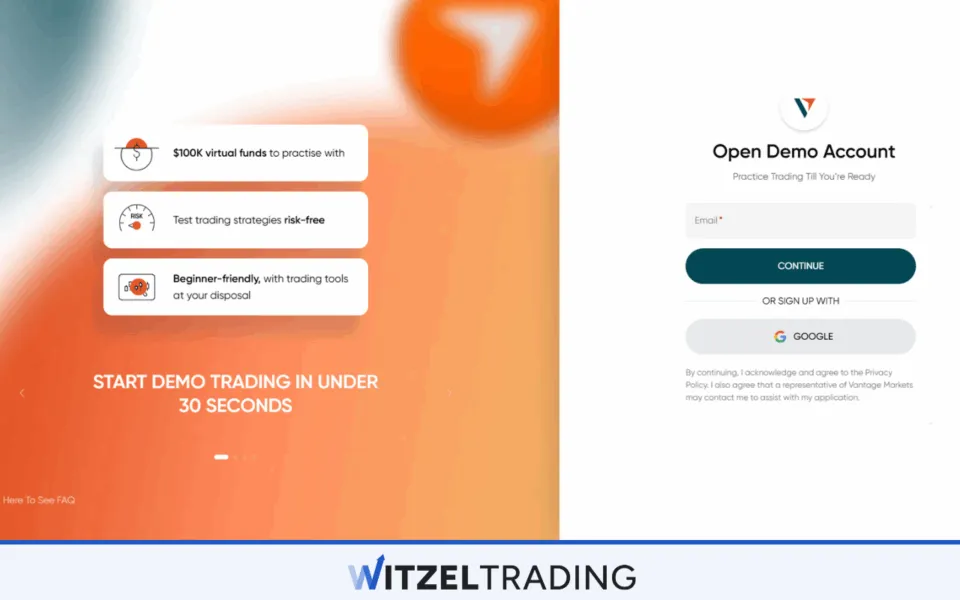
Most brokers offer a free demo account that you can use for as long as you like, and we recommend spending most of your time as a beginner trader on your demo account, simply because it’s the quickest route to understanding the platform and the nature of trading.
5. Deposit Money
After you’ve successfully registered and verified your account, you can deposit money to fund your trading account.
Most brokers today will offer you a fair choice of deposit methods, like:
- Bank (wire) transfer
- Credit/debit cards
- e-Wallets (like PayPal, Skrill, or Neteller)
- Cryptocurrencies (offered by some brokers)
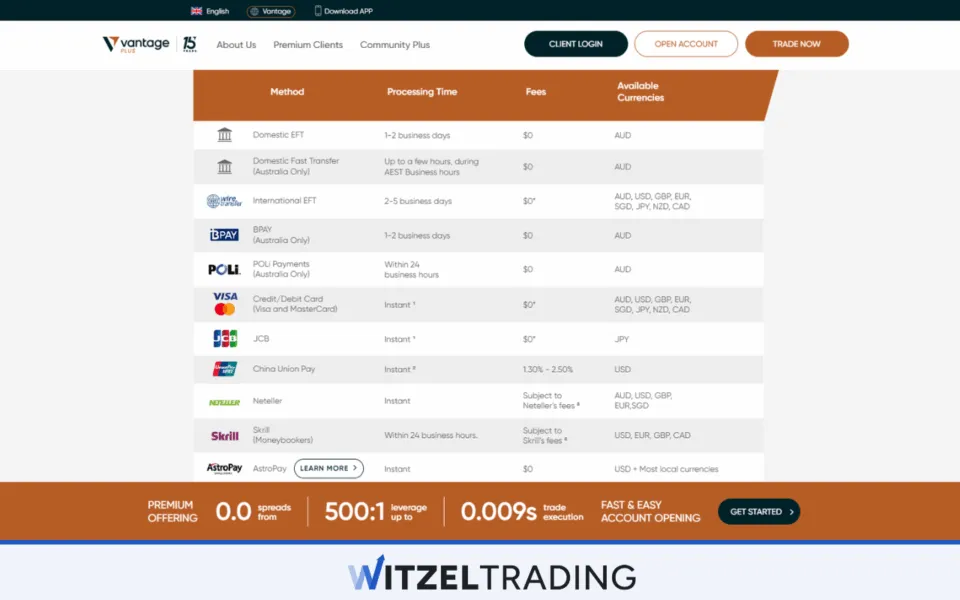
Each method comes with its own processing time, fees, and limits, so choose the one that suits you best.
Depositing money into your new forex trading account typically involves a few steps:
- Log in to your Trading Account
- Open the platform provided by your forex broker (for example, MetaTrader 4/5, cTrader, or the broker’s proprietary platform).
- Log in to the platform with the account credentials you generated when opening your trading account.
- Navigate to the Deposit Section
- Look for a section on your broker’s platform or website called “Deposit,” “Fund Account,” or “Account Funding.”
- Most brokers will have a simple interface that guides you to this section.
Choose your Deposit Method
Brokers will offer a variety of deposit methods, and you can choose the one that suits you best:
- Bank (wire) Transfer: This is a direct transfer from your bank to your forex account that can take a few business days, especially for international transfers.
- Credit or Debit Card: Visa, MasterCard, and sometimes other cards like American Express are accepted by many brokers, and while it’s usually instant, it may attract fees.
- E-wallets: Methods like PayPal, Skrill, Neteller, or other e-wallet services are fast and easy, and they usually have lower fees alongside faster processing times.
- Cryptocurrency: Some brokers accept deposits in cryptocurrencies like Bitcoin, Ethereum, or other digital currencies, and this is generally fast and often comes with lower fees.
- Other local methods: Some brokers accept local payment methods like bank wire, SEPA (Single Euro Payments Area), iDEAL, or Sofort, depending on your country.
Enter the deposit details
After selecting your preferred deposit method, you’ll need to enter the relevant details:
- For a bank transfer, you’ll need the bank account number, SWIFT/BIC code, and other details provided by the broker.
- For credit/debit cards, you’ll enter your card details (the card number, its expiration date, and CVV-the 3 digits on the back).
- For e-wallets, you’ll need to log in to your e-wallet and confirm the transaction.
- And for cryptocurrency payments, you’ll need to provide the crypto wallet address or make a transfer to the address provided by the broker.
Enter the deposit amount
- Specify how much money you want to deposit into your trading account (keeping in mind any minimum deposit requirement, which can vary depending on the account type or trading platform).
- For example, a typical minimum deposit might be around $100, but it can be lower or higher, depending on your broker.
Review your deposit and confirm the transaction
- Double-check the details of your deposit again (correct amount, the method, and anticipated fees).
- If everything looks correct, confirm the deposit-you may be asked to provide additional authentication depending on the method (e.g., a 2-factor authentication code or an email confirmation).
Wait for funds to be processed
The processing time (until funds actually appear credited to your trading account) depends on the deposit method:
- Allow up to 3 business days for bank or wire transfers.
- Credit/debit cards and e-wallets are typically processed instantly, or within a few hours.
- Cryptocurrency deposits are usually fast, but it depends on the network.
Check your account
Once the deposit has been completed, you should log into your trading account to see if the funds have been credited to your account. You should see the balance reflected in your account’s “Funds” or “Balance” section.
Important tips:
- Some deposit methods may incur variable transaction fees, so check for any associated costs beforehand.
- Be aware of any daily, weekly, or monthly deposit limits, especially for e-wallets or credit card payments.
- If your deposit currency is different from your account’s base currency, your broker might convert the funds and charge a small conversion fee.
- Always ensure that your account is secure by using strong passwords and enabling two-factor authentication (2FA) if available.
- Each broker will have slightly different steps or perhaps additional options for depositing money, so make sure to check the help section or FAQs on your broker’s website for tailored instructions before depositing funds.
6. Start Trading
Once your deposit is confirmed, you can use the broker’s trading platform to place your first trades.
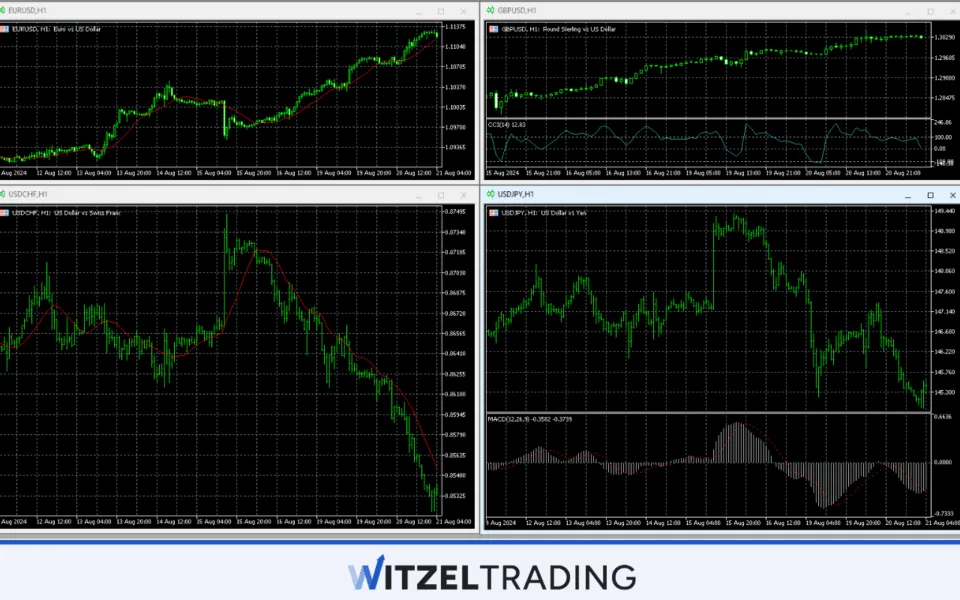
We at WR Trading insist that it’s important to start small and learn the ins and outs of the forex market, especially when it comes to managing margin and leverage.
Forex trading is not a story of overnight riches, but rather-like so many of the most worthwhile things in life-a process of accumulating experience that eventually builds skill and acumen.
What are suitable Trading Platforms for Forex Trading Accounts?
Suitable forex trading platforms (offered by various brokers) include MetaTrader 4 and MetaTrader 5, TradingView, and cTrader, to name a few of the best.
To begin trading forex, you’ll need a trading platform that connects you to the forex market.
A good forex trading platform is one that unambiguously facilitates forex trading, rather than forcing you to compromise on tools or features, and some of the most popular forex trading platforms include:
- MetaTrader 4/5 (MT4/MT5): These platforms are widely used due to their reliability, ease of use, and extensive features for technical analysis.
- TradingView: Ideal for traders who focus heavily on charting and technical analysis, with cloud-based access.
- cTrader: Known for its user-friendly interface, fast execution, and advanced charting tools.
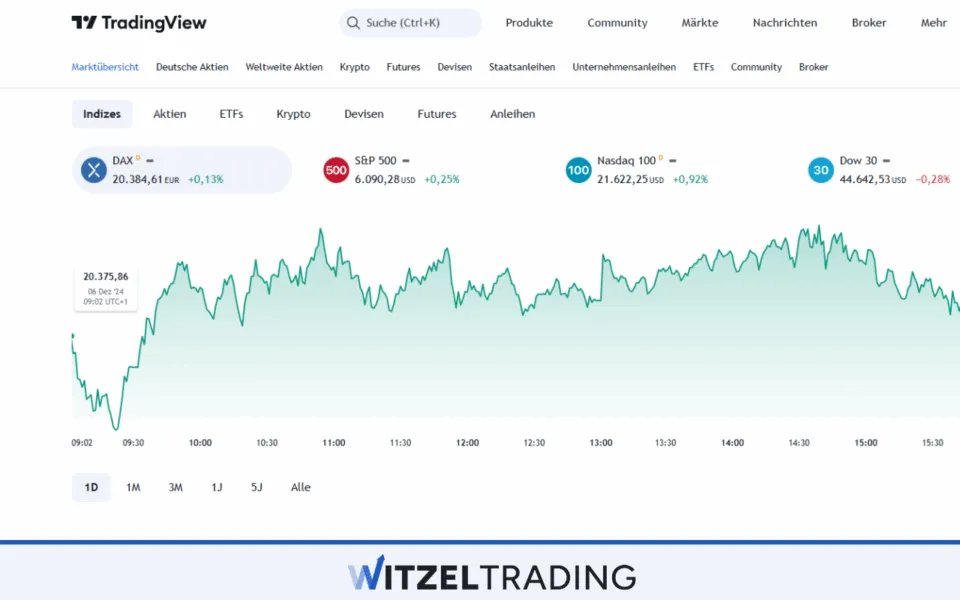
Make sure that your broker offers the platform you desire or a platform you are comfortable with, as this will be where you make all of your trades.
What are the Costs on Forex Trading Accounts?
Costs on forex trading accounts include the offered spread, commissions, swap or overnight fees, and deposit and withdrawal fees.
These various costs will affect your profitability, so it’s important to be aware of what exactly you’re paying in each applicable category.
The main costs you’ll encounter include:
- Spreads: This is the difference between the bid and ask price (a smaller or tighter spread is more favorable for you as a trader).
- Commissions: Some brokers charge a commission on trades, especially ECN brokers, while certain account types attract no commission, and others will have a zero pip spread and only commission-research your costs when it comes to account types and relevant commissions payable.
- Swap/overnight fees: If you hold a position overnight, brokers may charge a swap fee (depending on interest rate differentials).
- Deposit/withdrawal fees: Some payment methods come with additional fees whether money is going in or coming out.
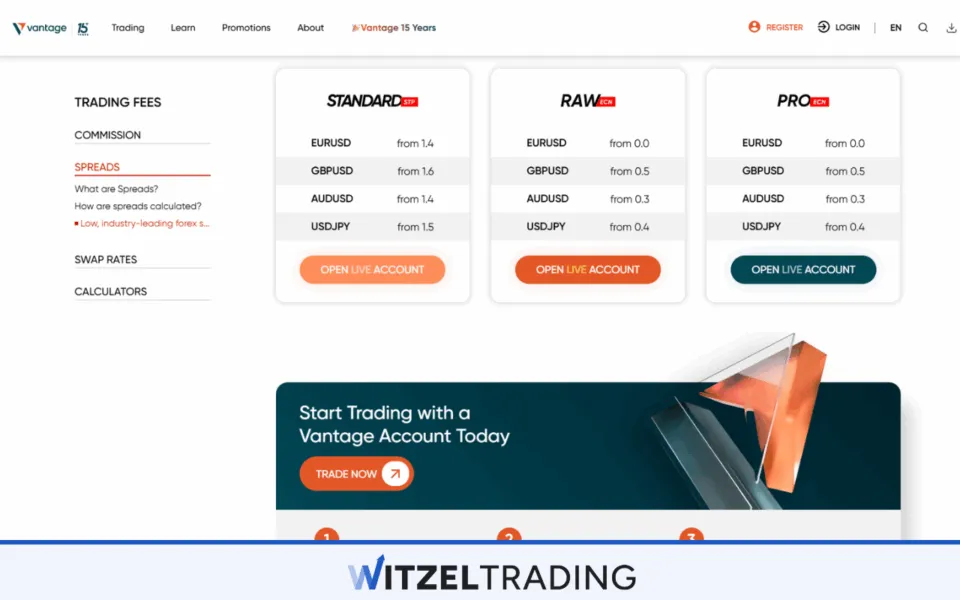
Make sure you check the broker’s fee structure (look at the website information/FAQs/engage Support) and choose one with low transaction costs, especially if you plan on trading frequently.
What are the Specifications of Forex Trading Accounts?
The specifications of your trading account will determine things like the minimum deposit required, how much leverage you can use, and the types of spreads and commissions applied to your trading account.
Here’s a comparison of typical forex account specifications:
| Feature | Standard Account | ECN Account |
|---|---|---|
| Leverage | Leverage 50:1 to 500:1 | Leverage 50:1 to 200:1 |
| Minimum Deposit | $100 | $500 |
| Spread | Fixed or variable | Variable |
| Commission | None or very low | $3 – $7 per lot |
| Swap fees | Depends on currency | Depends on currency |
| Order execution | Market | Direct market |
Leverage allows you to control larger positions with a smaller amount of capital-you’re essentially using the broker’s money to plump up your position.
It’s important to note that leverage can amplify both profits and losses, so it’s crucial to use it responsibly and it’s certainly not a tool to be used by new traders from the start.
How secure are Forex Trading Accounts?
Forex trading accounts are generally secure, but security largely depends on your broker’s practices.
Look for brokers that:
- Are regulated by respected financial authorities (FCA, ASIC, CYSEC, CFTC).
- Use SSL encryption to protect your data.
- Offer two-factor authentication for added account security, and practice the segregation of traders’ funds from the brokerage’s assets.
Always do your due diligence before selecting a broker to ensure your funds are safe, as while there is a limit as to how much you can control of a broker’s internal practices, you can at least select from those who make your peace of mind a priority.
Be aware of forex trading account scams!
By and large, forex accounts are safe, and the arena has nothing like the horrific crypto hacks from exchanges in its history.
Just as you would with your personal bank account, it´s good practice to monitor your account regularly and withdraw some accrued profits from time to time.
Unfortunately, the forex market is not without its share of scammers, and an entire article could be written on the underbelly of financial trading-the scams, impostors, and outright con artists.
To avoid falling victim to fraud:
- Choose a regulated broker that has a good online reputation, one that is well known in trading circles and has a history.
- Be cautious of brokers offering unrealistic returns or promises, or “guaranteed” returns.
- Avoid brokers with no physical address or contact information-these are red flags online for any kind of financial transacting.
Remember, if something seems just too good to be true, it is. It’s a con. It’s at best a Ponzi scheme waiting to collapse, probably on top of you-steer clear.
Conclusion
Opening a forex trading account is a straightforward process if you do the necessary research beforehand and follow the necessary steps. Start with a reputable broker, verify your account, test with a demo account, and understand the costs and risks involved. The right trading broker is essential to save costs and ensure quick order execution.
To maintain profitability from the outset, always trade responsibly, apply strict discipline when choosing trades and your exposure in them, and use leverage with caution to avoid unnecessary risk.
Frequently Asked Questions on Opening a Forex Trading Account
What is leverage in forex trading?
Leverage in forex allows you to control a larger position than your initial deposit. For example, with 100:1 leverage, you can control $100,000 with just $1,000 in margin. Your broker is essentially lending you the other $99,000. There are pros and cons to leverage, however. The biggest benefit is of course increased potential profits, as leverage allows you to take larger positions with a smaller amount of money, and if the trade moves in your favor, your profits are amplified. In the example above, a 1% move in your favor would mean a $1,000 gain as opposed to just a $10 gain had you forsaken leverage and staked a $1,000 position. Conversely, leverage will also increase your losses. If the trade moves against you, the losses can be significantly larger than they would be if you were only trading with your own capital. Again as per the example above, with 100:1 leverage, if the market moves 1% against your position, you could lose $1,000 on a $100,000 position—the same amount you put up as margin. That means you could lose your entire margin (and more) if you’re not careful. Also, when your losses reach a certain point, your broker will issue a margin call, asking you to deposit more funds to maintain the position. If you don’t, they will close your position to prevent further losses.
What documents do I need to verify my forex account?
You’ll typically need a government-issued photo ID (or passport or driver’s license) and some form of proof of your address (a stamped bank statement, utility bills in your name, etc.).
Can I open a forex account with a small deposit?
Yes, many brokers offer accounts with low minimum deposits (as low as $50 or $100).
What is a demo account, and do I need one?
A demo account lets you practice trading with virtual money, without risking your own funds. It’s also ta great way to familiarize yourself with the trading platform before going live. Indeed, as you progress as a trader, your demo account will become more important to you, not less, as it becomes your training and testing ground, allowing you to refine existing strategies and develop new ones, all without compromising your account balance. It allows you to backtest and cement your understanding of market nuances, and thus forms a crucial component of every seasoned and profitable trader’s toolkit.
How can I withdraw money from my forex trading account?
Withdrawal methods usually mirror deposit methods and may include bank transfers, payments to credit/debit cards, or e-wallets.


